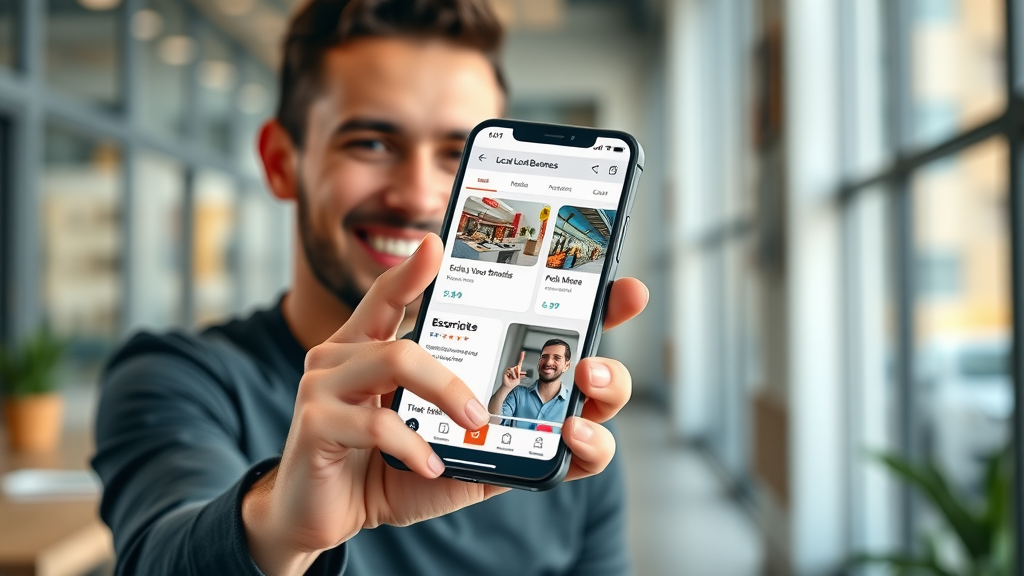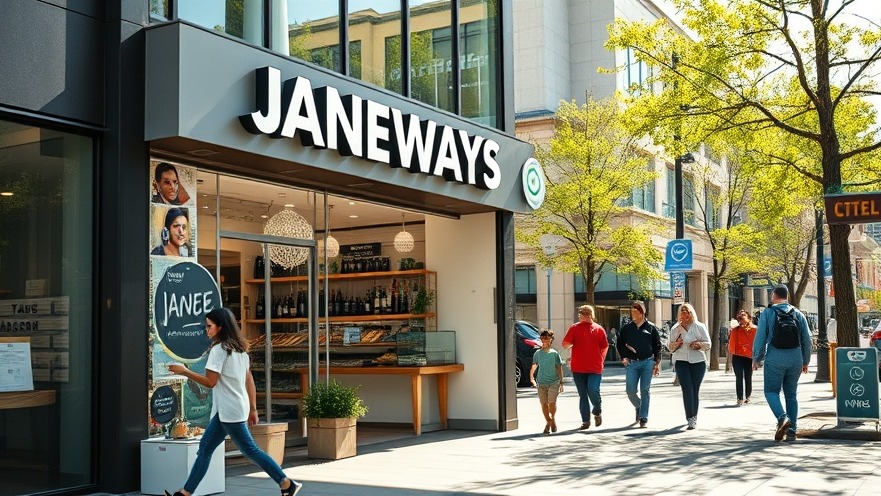
Did you know that 46% of all Google searches are hunting for local information? If your business isn’t appearing when potential customers search for services “near me,” you’re missing out on a goldmine of opportunities. Local SEO tips are more crucial than ever in today’s digital age, ensuring your local business stands out in saturated markets and ranks higher in search results. Ready to transform your visibility and dominate the competition? Let’s dive into proven strategies that skyrocket your local ranking —no guesswork needed.
Revealing Local SEO Tips: Startling Facts and Why Local Ranking Matters Now
- In this educational resource, you'll discover the most up-to-date local SEO tips, tools, and proven methods to optimize your Google Business Profile and dominate local search.
- Whether you're a new business or an established local business, these strategies will enhance your presence on Google Map, drive more customers, and outpace local competitors.
Local SEO tips aren’t just theoretical hacks—they’re a must-have resource for every local business aiming to attract nearby customers. Recent data shows that appearing in top local search results can directly lead to higher in-store foot traffic, more phone inquiries, and consistent revenue growth. Success hinges on understanding modern ranking factors, optimizing your Google Business Profile, and offering a frictionless user experience on every device.
By implementing these local SEO tips, you can finally get your business into the coveted local pack on search engines. Imagine being one of the first names people see when searching for a service you offer—automatic credibility and customer trust. Through Google Maps and reviews, you’ll build authority in your community, making your local business the standout choice in search results. Let’s delve into why local ranking is the backbone of effective digital marketing.
Why Implementing Local SEO Tips is Crucial for Local Business Success

The digital landscape is fiercely competitive, meaning your local business needs to show up at the right place and time in search engine results. Implementing rock-solid local SEO tips ensures you stay ahead of competitors by increasing your visibility, credibility, and relevance. This isn’t just about being seen—it’s about being chosen.
For small businesses, local SEO strategy translates to tangible growth. With optimized pages and Google Business Profile, you dominate Google Map listings and drive highly qualified local site traffic, resulting in more inquiries and higher conversion rates. Whether you run a boutique, coffee shop, service company, or multi-location enterprise, mastering these strategies can be the power boost your business needs.
As more consumers turn to mobile devices and voice search for immediate solutions, failing to invest in local SEO means losing ground to businesses that are willing to adapt. That’s why prioritizing local ranking factors, accurate business info, and compelling reviews is non-negotiable for sustainable success.
Examining Local Ranking Factors: Gaining Priority in Search Engine Results
Local ranking is influenced by a unique set of ranking factors compared to traditional SEO. Search engine algorithms prioritize signals such as business location, NAP consistency, customer reviews, proximity of the searcher, and quality backlinks from reputable local business directories. Your Google Business Profile acts as a central hub for these signals, giving search engines clear information to rank your business higher in the local pack and beyond.
Maximizing your local SEO ranking involves regularly updating your business profile, earning authentic reviews, and leveraging keyword research to align your site with user intent. Other crucial local ranking factors include on-page SEO (using location-based keywords) and strong mobile optimization. Making sure your presence is robust across multiple platforms—Google Maps, directories, and social media—further cements your authority in local search.
Remember that search engines are constantly refining how they value different ranking factors, so staying agile and up-to-date with the latest best practices can make all the difference. Emphasize accurate business information, and keep your site’s content fresh and relevant for optimal local results.
Understanding Your Google Business Profile as a Local Ranking Asset
Your Google Business Profile is the cornerstone of your local SEO tips toolbox. Google uses the information in your business profile—such as address, phone number, website, hours, and reviews—to determine your position in local search results. A well-maintained business profile not only helps you appear on Google Maps and local pack listings but also builds trust with potential customers.
Ensuring consistency in your business name, address, and phone number (NAP) across all platforms acts as a significant ranking factor . The more complete and engaging your profile—including photos, posts, and up-to-date business info—the higher your chances of being discovered and contacted.
“46% of all Google searches are looking for local information.” – Google
| Ranking Factor | Impact on Local SEO | How to Optimize |
|---|---|---|
| Google Business Profile | High | Complete info, images, reviews, up-to-date hours |
| Local Keywords | High | Keyword research, use in meta tags, headings, content |
| Consistent NAP | High | Ensure accuracy across all listings and websites |
| Reviews/Reputation | Medium-High | Encourage reviews, respond thoughtfully |
| Local Citations | Medium | Add to authoritative directories |
| Backlinks | Medium | Earn links from local sites and partners |
| Mobile Optimization | Medium | Responsive design, fast page speed |
Building an Effective Local SEO Strategy: Step-By-Step Local SEO Tips

Crafting a powerful local SEO strategy isn’t a one-time event—it’s an ongoing process designed to ensure every part of your digital presence boosts your local ranking . Here are step-by-step local SEO tips to guide business owners at every stage:
First, identify your local keywords through thorough keyword research. Focus on terms that potential customers are actually searching for in your area. Next, implement strong on-page SEO practices by optimizing your website’s metadata, content, and site structure for these targeted local keywords.
Don’t overlook the significance of Google Map optimization and keeping your Google Business Profile updated. Amplify your strategy with robust citation building and consistent content creation that speaks directly to your local audience. Monitoring analytics and performance metrics will help refine your efforts and ensure long-term growth.
Local Keyword Research and Selection for Local Businesses
Effective keyword research is the first step to conquering local search results. Begin by listing core services and products, then pairing them with your location (city, neighborhood, or service area) to create location-based keyword variations. Tools like Google Keyword Planner and SEMrush can identify high-traffic local keyword phrases. Look for searches with high commercial intent—what are potential customers actually typing into Google when they need your offerings?
Target a combination of local keyword phrases including service, location, and “near me” terms. Analyzing your competitors’ keywords with SEO tools can also uncover missed opportunities. Remember, long-tail and hyperlocal terms might send less volume but have higher conversion rates because they reflect strong intent.
Sprinkle these local keywords throughout your website, meta tags, business profiles, and even in blog content. This increases relevance and helps search engines connect your business to the right local searches.
On-Page SEO: Maximizing Local SEO for Website Optimization
On-page SEO is a foundational part of any local SEO strategy. Elements like meta titles and descriptions, header tags, image alt text, and schema markup provide critical signals to search engines about your location, services, and relevance. Be sure to include your target local keywords naturally in these areas without keyword stuffing, keeping content clear and engaging for visitors.
Don’t neglect technical elements—make sure your site loads rapidly, is mobile-friendly, and has no broken links or duplicate content. Embed Google Map, mention your service area clearly, and provide business info (address, phone number) on every page for maximum local SEO value.
Fresh, authoritative content with a local twist—like blog posts about community events or local guides—keeps visitors engaged and indicates your business’s continued relevance in search engine algorithms.
Google Map Optimization: Boosting Google Business Profile Visibility
If you want your business to rank in the Google Map pack, you need to optimize your Google Business Profile with up-to-date, accurate information. Add a thorough business description, choose relevant categories, upload high-quality images, and make sure your NAP information is identical to what’s listed elsewhere online.
Encourage satisfied customers to leave reviews through simple follow-ups and reminders. Respond to every review—good or bad—to show you value feedback and build authenticity. Highlight your presence through frequent posts, special offers, or event announcements directly on your profile. Consistently applying these local SEO tips increases visibility, credibility, and positive customer sentiment.
A strong Google Business Profile not only boosts map visibility but helps search engines distinguish your business as the go-to destination for local searches in your industry.
- Conduct local keyword research targeting your service area
- Optimize on-page SEO with accurate NAP, metadata, and schema markup
- Complete and regularly enhance your Google Business Profile
- Request and respond to customer reviews
- Build local citations in top business directories
- Create engaging local content to attract your target audience
- Monitor analytics to adjust your local SEO strategy
Optimizing Your Google Business Profile for Top Local Rankings
Complete and Enhance Business Profile with Accurate Information

To thrive in local search, your Google Business Profile must be thoroughly completed and regularly updated . Essential information such as business name, address, phone number, business hours, website, and business description should always be correct and consistent across every platform. Add attention-grabbing photos and videos, list your services or menu, and showcase what differentiates your local business in the market.
Enhance your profile with service attributes (like “wheelchair accessible”, or “women-led”), offer special promotions, and post regular updates. Search engines and potential customers both favor active and well-maintained business profiles. The more complete and optimized your listing, the higher you’ll rank—and the more likely customers are to choose you.
Keeping your business profile data current is vital for capitalizing on seasonal promotions, unexpected closures, or special event hours. This transparency builds trust and encourages customer loyalty in your community.
Leverage Reviews and Google Business Features for Credibility
Reviews profoundly impact your local SEO ranking and customer decision-making. Encourage every happy visitor to leave a detailed review on Google. Respond to both positive and negative reviews promptly and professionally, demonstrating your commitment to service and community feedback.
Beyond reviews, use additional Google Business Profile features—like Q&A, appointment booking, events, and product showcases—to make your profile interactive and convenient. These enhancements attract more visitors, keep your profile active, and signal to search engines that your business is a top choice in local search results.
"A fully optimized Google Business Profile can increase discovery by up to 70%."
Local Content Creation: Tailored Content Strategies for Local SEO
Using Local Keywords and Business Profile Insights to Engage Audiences

To truly connect with your community and climb local search rankings, produce content that speaks directly to nearby audiences. Start by analyzing your Business Profile Insights to learn which terms customers use to find you, then build blog posts, guides, or videos optimized for those local keywords. This keeps your local SEO strategy relevant and targeted.
Embrace topics like local events, city guides, or customer success stories—each incorporating niche, location-based search terms. This approach not only draws organic site traffic but also signals to search engines that your business offers fresh, community-focused value.
Share content on your website, social channels, and Google Business Profile updates to amplify reach and relevance across all local search engines.
List of Content Ideas to Support Your Local SEO Strategy
- Neighborhood guides and local resource lists
- Interviews with local customers or business partners
- Spotlights on community events, festivals, and news
- FAQs about your services focused on local pain points
- Testimonials and case studies showcasing local success
- Behind-the-scenes features and employee highlights
- Seasonal promotions or announcements relevant to your city
Link Building and Citations: Amplifying Your Local SEO Footprint
Identifying Authoritative Local Business Directories and Citation Sites

Claiming your business listing in reputable local directories strengthens your digital footprint and provides vital signals to search engines. Focus on high-authority sites such as Yelp, TripAdvisor, Better Business Bureau, and industry-specific directories. Local chambers of commerce, professional associations, and city-run portals often offer powerful, relevant citation opportunities as well.
Ensure that your information—especially business name, address, and phone number—is perfectly consistent across every citation. Even minor variations can dilute your local SEO ranking and sow confusion among search engines, damaging your credibility.
Regularly audit your citations to correct inaccuracies and update details. This proactive approach not only helps you stay competitive in local results but also improves the trustworthiness of your business info for potential customers and partners.
Building Backlinks to Improve Local Ranking and Visibility
Earning backlinks from respected local sources boosts your domain’s authority and demonstrates relevance in the community—both of which are central ranking factors in modern local SEO . Connect with local bloggers, media outlets, event organizers, and charities for guest posts, sponsorships, or partnership opportunities.
Co-create content with other trusted businesses, offer expert quotes for news features, and participate in community initiatives to generate organic, high-quality links back to your site. Search engines reward these efforts by promoting your site higher in local search rankings, ultimately leading to more potential customers finding your business online.
Backlink building should be continuous—track your local search ranking regularly and update your strategy to outpace nearby competitors.
- Always use consistent NAP details
- Choose high-quality, relevant directories over quantity
- Regularly check for and fix duplicated or outdated listings
- Monitor your listings for negative reviews and respond promptly
- Use citation-tracking tools for streamlined management
Mobile Optimization: Ensuring Local SEO Tips are Effective on All Devices
Mobile-Friendly Design and Local Search Accessibility

Over half of all local searches now happen on mobile devices. If your website isn’t designed to be responsive and load quickly, you risk losing potential customers and falling behind in the local ranking race. Mobile accessibility is not only about resizing for screens—it’s about click-to-call buttons, easy-to-read content, and streamlined menus that make it effortless for users to connect with your local business.
Mobile-first indexing means Google and other engines primarily judge your site on its mobile user experience. Ensure that addresses and phone numbers are clickable, and check that your business info is easy to find for walk-in visitors or callers on the go.
Simple mobile navigation and prominent business profiles will set you apart in local search results and encourage quick action from interested searchers.
Page Speed and User Experience as Local SEO Ranking Factors
Page speed is a critical local SEO ranking factor that can directly impact conversion rates and user engagement. Modern visitors expect your site to load in under three seconds—any delay means lost interest and slipping search ranking. Use Google PageSpeed Insights to pinpoint and resolve issues, such as oversized images, scripts, or broken plug-ins.
Optimize images with local keywords in alt text, compress files, and remove unnecessary widgets to keep pages running smoothly. User experience extends beyond speed; logical navigation, compelling calls to action, and locally relevant content help keep visitors engaged and drive conversions.
Ultimately, local SEO success is about connecting fast, reliable information to customers when and where they need it most.
Tracking Performance: Measuring the Impact of Local SEO Tips
Key Metrics for Assessing Local Ranking Improvements

Consistent tracking and analysis separate great local SEO strategy from average efforts. Monitor key metrics such as local pack visibility, website traffic from organic searches, Google Business Profile engagement (views, direction requests, calls), and online review activity. These indicators reveal which strategies are working and identify areas needing improvement.
Leveraging tracking tools like BrightLocal, Moz Local, or SEMrush offers granular insights into your local ranking compared to competitors. Set specific goals—such as increasing map listing clicks or boosting site traffic from nearby zip codes—and track your progress month-over-month.
Gathering actionable data helps you make informed adjustments, ensuring your local SEO growth is sustainable over time.
Google Analytics and Google Search Console for Local Business Optimization
Google Analytics gives you visibility into which location-based searches bring visitors to your site, while Google Search Console highlights keyword rankings, technical issues, and opportunities for improvement. Link both platforms to your website and Google Business Profile to paint a clear, actionable picture of your local SEO impact.
By analyzing these insights, you can fine-tune on-page SEO, identify underperforming pages, and uncover high-converting local keyword opportunities. Regularly reviewing these reports allows you to spot local search ranking drops early and implement quick fixes.
Data-driven decisions keep your business profile visible and competitive in local search results.
| KPI | Why It Matters | Goal |
|---|---|---|
| Google Business Profile Views | Gauge profile discoverability | Increase monthly by 10-20% |
| Local Pack Rankings | Monitor visibility vs. competitors | Achieve top 3 for target terms |
| Direction Requests / Calls | Direct impact on foot traffic | Steady growth month-over-month |
| Organic Site Traffic (Local) | Highlight effectiveness of local keywords | 20% of total organic traffic |
| Online Reviews | Tracks customer satisfaction & trust | At least 1 new review per week |
- Check and update Google Business Profile info weekly
- Review analytics for local keyword/search engine performance
- Respond to reviews and messages promptly
- Refresh content with seasonal updates monthly
- Track all citation and backlink changes
Advanced Local SEO Tips: Standing Out in Competitive Local Searches
Leveraging Structured Data and Schema Markup for Local Business

Using structured data (schema markup) helps search engines better understand your website’s content, business info, and local relevance. Add local schema to your site’s code to display rich results—like star ratings, operating hours, or site links—in search engine results. This visibility draws the eye and increases click-through rates.
Schema markup is a technical but critical tool in advanced local SEO strategy . It can differentiate your business in Google’s local pack and maps, especially in dense, competitive markets. Regularly validate and test your markup for changes to Google guidelines.
Investing in these advanced local SEO tips is a proven way to outpace competition and capitalize on every search opportunity.
Harnessing Voice Search and Hyperlocal Targeting in Local SEO Strategy
With the rise of voice assistants, voice search optimization is now a crucial pillar of local SEO . Use conversational, question-based keywords and ensure your business info is up-to-date for quick answers to “Who is the best [service] near me?” and similar queries.
Hyperlocal targeting means optimizing for smaller geographic areas—like individual towns, landmarks, or neighborhoods—instead of broad city searches. Combine this with data-driven insights from your Google Business Profile, and you can dominate micro-markets your competitors overlook.
“Businesses using advanced local SEO strategies see 2x more visits from unbranded local searches.”
Local SEO Tips for Multiple Locations and Franchises
Effective Local SEO Management Across Multiple Business Profiles
Managing local SEO for multiple locations requires a scalable, detail-oriented approach. Each site and Google Business Profile should have unique, location-specific details, including descriptions, keywords, images, and locally relevant content.
Use bulk management tools within Google Business to streamline updates, monitor metrics, and respond to reviews efficiently. Assign local managers to oversee real-time engagement and adapt strategies to local trends or customer preferences.
The key is to balance global brand guidelines with highly customized, hyperlocal SEO tactics for each branch or franchise.
Consistent NAP (Name, Address, Phone) for Cohesive Local Ranking
Consistency is king in local SEO across multiple locations. Audit every directory and citation source to guarantee the business name, address, and phone number (NAP) are identical for all profiles. Even small discrepancies between listings can confuse search engines and lower your local ranking .
Set up regular review protocols for all listings, and correct problems quickly. Use digital tools such as Moz Local, Yext, or BrightLocal to automate and monitor NAP consistency at scale, preventing issues before they impact your search ranking.
Uniformity reinforces the legitimacy of each branch, improving the odds that every local business appears prominently in searches within its specific neighborhood.
- Build separate location pages with unique local content, keywords, and schema
- Use bulk update features to streamline business info changes
- Assign local staff to manage each profile and engage with customers
- Monitor local search rankings per location and refine strategies individually
- Maintain consistent branding alongside location personalization
Real-World Success Stories: Local Businesses Soaring with Local SEO Tips
Case Study: How a Local Business Tripled Search Visibility

A small bakery in downtown Jersey City overhauled its local SEO by implementing a fresh, fully optimized Google Business Profile and regularly producing location-based blog content. Within six months, their Google Map listing rose to the top three for crucial local keywords, tripling online discovery and resulting in a 40% boost in in-store purchases.
Consistent citation management ensured search engines had no conflicting business info, while timely responses to every customer review fostered a loyal, vocal community of advocates. The owner credits local SEO as the single most transformative investment in their marketing strategy.
Such results show that the right local SEO tips deliver real, measurable success for local businesses willing to embrace them.
Case Study: Local Ranking Improvements Through Optimized Google Business Profiles
A growing service company with five branches across New Jersey implemented robust NAP audits and refreshed each branch’s Google Business Profile with unique images, offers, and content. The effect was immediate: the company’s profiles appeared in more local search results, and clicks for directions increased by over 75%, driven by better coverage in Google Maps and the local pack.
The secret was a disciplined focus on location-specific details, daily review management, and leveraging Google Business Profile features—strategies any business can adopt for exponential local ranking improvements.
Continuous tracking of analytics made it easy to spot trends, adjust content, and double down on what worked for each local audience.
- Optimize every Google Business Profile individually using unique content and images
- Encourage and manage reviews at a local level to build trust
- Invest in robust citation management for authority and accuracy
- Produce hyperlocal content addressing each neighborhood’s needs
- Monitor performance and adapt quickly to local search trends
Potential Challenges and Solutions When Applying Local SEO Tips
Overcoming Local Ranking Fluctuations and Google Business Suspensions
It’s common for local rankings to fluctuate due to algorithm updates, changes in competitor strategies, or technical issues with business profiles. If you notice sudden drops, verify that NAP info remains accurate everywhere and that your site has not been penalized for duplicate or irrelevant content.
If your Google Business Profile is suspended, follow Google’s support process closely—correct any violations and provide clear, verifiable business documentation. Keep detailed records of updates to speed the reinstatement process.
Always monitor search ranking trends and local results to prevent small issues from becoming bigger setbacks.
Navigating Competitive Local Search Environments
Highly competitive areas and markets with many similar businesses demand extra creativity. Focus on collecting authentic customer reviews, producing shareable, community-centered content, and building hyperlocal backlinks—such as collaborations with schools, charities, or local influencers.
Stay ahead by tracking competitor activity, running regular citation audits, and experimenting with advanced tactics like schema, voice search optimization, and featured Google Business Profile posts.
Leverage data analytics to uncover overlooked keyword opportunities and areas for differentiation based on your unique value proposition.
- Regularly audit and update all listings for NAP accuracy
- Respond promptly to reviews and questions
- Invest in advanced SEO strategies like schema and voice optimization
- Monitor competitors and refine strategies proactively
- Use analytics to adapt quickly before small issues become major problems
Frequently Asked Questions: Expert-Backed Local SEO Tips
What is the best strategy for local SEO?
A: The best strategy for local SEO involves optimizing your Google Business Profile, focusing on relevant local keywords, earning high-quality citations, building reviews, ensuring consistent NAP across platforms, and creating localized content that meets the needs of your ideal customers.
How do I do local SEO?
A: Start by claiming your Google Business Profile, conducting keyword research for local terms, ensuring your website is optimized for on-page SEO, obtaining relevant citations, building local backlinks, and asking satisfied customers for reviews. Consistent monitoring and updates are also essential to sustain and advance your local rankings.
How can I improve my local SEO ranking?
A: Improve your local SEO ranking by optimizing on-page content with local keywords, updating your Google Business Profile, acquiring citations in top directories, responding to customer reviews, using mobile-optimized web designs, and leveraging structured data for enhanced local search visibility.
What are the 3 C's of SEO?
A: The 3 C's of SEO are Content (high-quality, relevant local SEO content), Code (well-structured, optimized website code), and Credibility (backlinks, citations, and user reviews that build your online authority).
Expert Tips for Ongoing Success Using Local SEO Strategies
Stay Up-to-Date with Changing Local Ranking Factors
Search algorithms and ranking factors evolve constantly, so make it a habit to keep learning and adapting your approach. Monitor Google updates, follow credible SEO blogs, and experiment with new local SEO tips regularly.
Engage Your Community: Building Brand Loyalty Through Local SEO
Your best local ranking strategy is to remain authentically connected to your community. Host events, support local causes, and encourage customer-generated content featuring your business. Active local engagement boosts reviews, backlinks, and word-of-mouth—each vital for lasting digital and offline growth.
- Schedule monthly audits for business info and citations
- Plan regular blog updates focusing on seasonal and hyperlocal topics
- Ask your top customers for detailed reviews
- Join community business groups and networks
- Attend local SEO webinars for ongoing education
Key Takeaways from Today’s Actionable Local SEO Tips
- Prioritize your Google Business Profile, target local keywords, secure quality citations, encourage reviews, and update content for lasting local search and local ranking improvements.
Ready to Transform Your Local Ranking? Get Expert Local SEO Tips Now
Supercharge Your Local Business Growth—Call us today! 908 520-0095
Implement these local SEO tips, stay adaptable, and watch your local business rise above the competition—call us for expert help!
Sources:
- BrightLocal – https://www.brightlocal.com/learn/local-seo/
- Moz – https://moz.com/learn/seo/local
- Google Search Central – https://developers.google.com/search/docs/fundamentals/seo-starter-guide
- Google Business Profile Help – https://support.google.com/business/answer/7091
- Search Engine Land – https://searchengineland.com/what-is-local-seo-275153
To further enhance your understanding of local SEO strategies, consider exploring the following resources:
-
“7 Local SEO Tips To Scale Your Small Business” ( spiralytics.com )
-
“Local SEO tips for small businesses” ( bdc.ca )
These articles provide actionable insights and strategies to improve your local search rankings and attract more customers.
 Add Row
Add Row  Add
Add 




Write A Comment